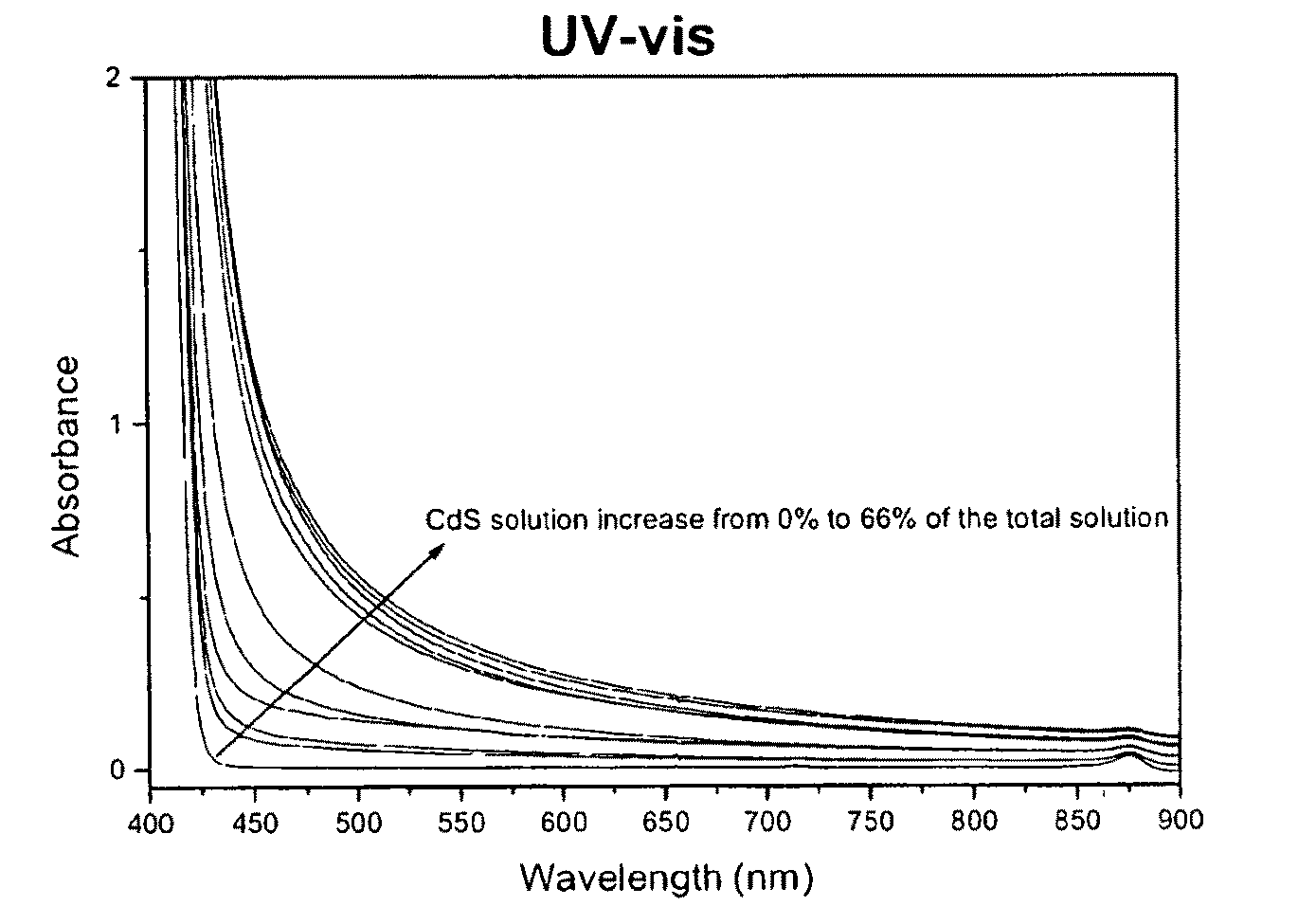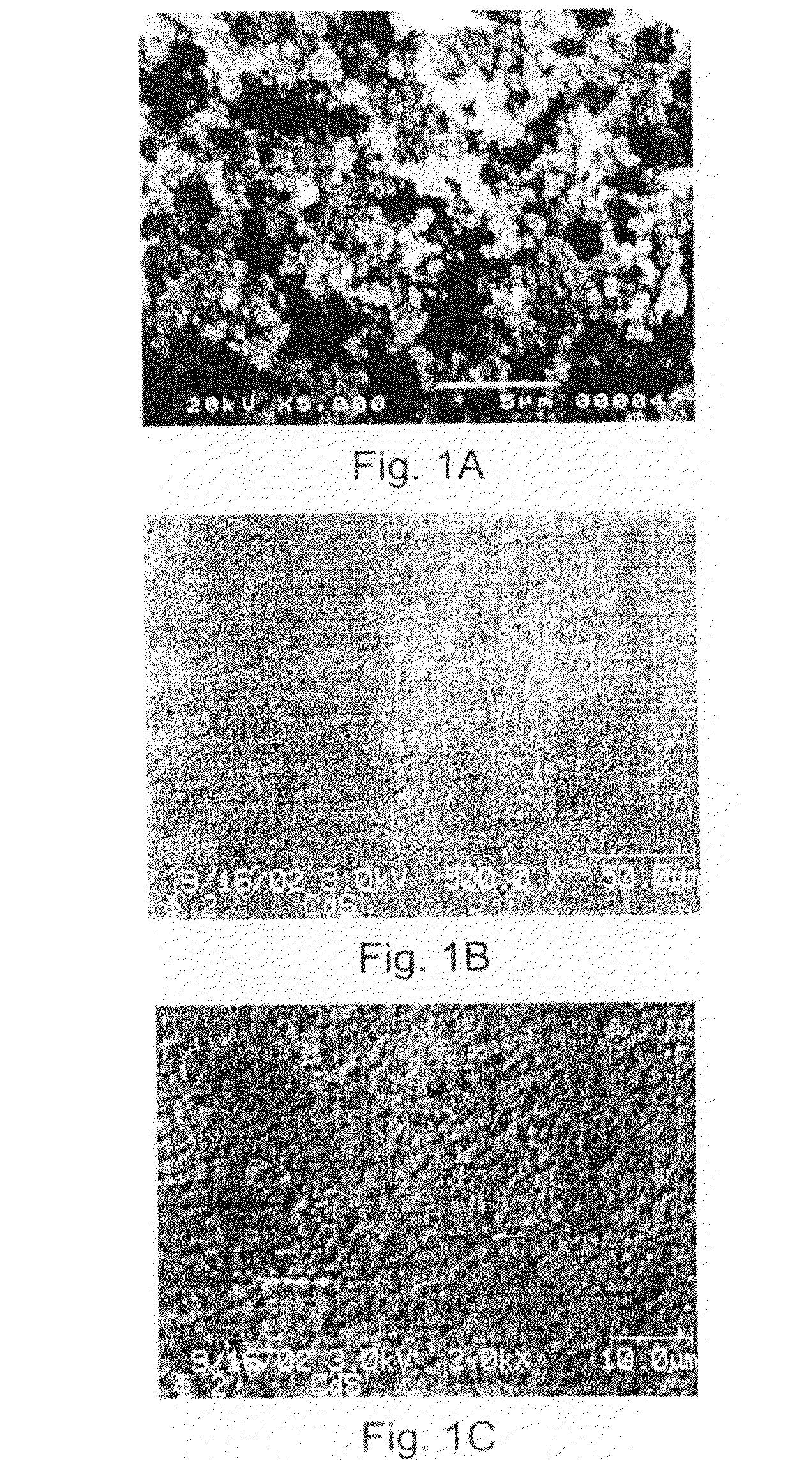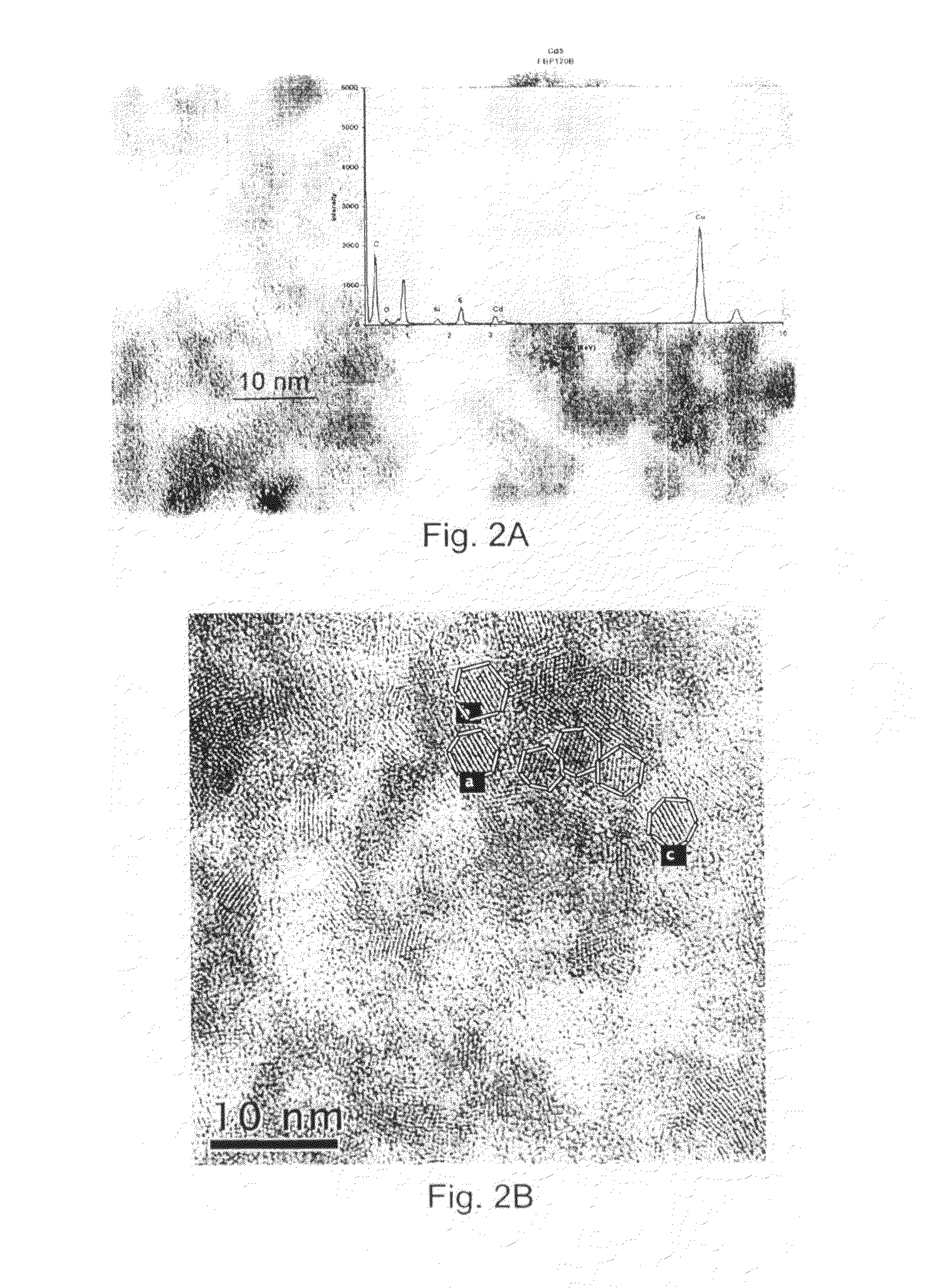Hybrid nanocomposite semiconductor material, and method of producing inorganic semiconductor therefor
a semiconductor material and hybrid technology, applied in the field of hybrid organic/inorganic semiconductor materials and methods of producing inorganic semiconductors therefor, can solve the problems of increasing costs, affecting the efficiency of production, so as to reduce the agglomeration of smaller particles, and reduce the risk of superheating solven
- Summary
- Abstract
- Description
- Claims
- Application Information
AI Technical Summary
Benefits of technology
Problems solved by technology
Method used
Image
Examples
example 1
Preparation of Inorganic Semiconductor Nanoparticles
1A: CdS Nanoparticles
[0055]CdS nanoparticles were prepared using cadmium acetate (Aldrich) and thiourea (Aldrich) as precursors. 50 mL of DMF (Aldrich) in a flask was degassed for 30 minutes under N2. Cadmium acetate (0.0355 g of Cd(OAc)2.H2O) and thiourea (0.0092 g) were combined into the DMF and stirred until the reagents were completely dissolved. The solution was then placed in a microwave equipped with an opening to allow a condenser out of the microwave chamber (Model Mars 5×CEM system with a 2.45 GHz working frequency). Heating temperature and hold time were controlled to provide tunability in particle size distribution. Temperature control was provided with a fibre optic thermocouple placed near the solution. For particles of 5 nm in diameter, the ramp time was 5 minutes, the final temperature was 90° C. and the hold period was 30 minutes. As soon as the hold period was complete, the flask is put into an ice bath with conti...
example 2
Preparation of Thin Films of Semiconductor Material
2A: Films of CdS Embedded in PFOx4:1
[0064]An alternating copolymer of 9,9-dioctylfluorene and oxadiazole having a fluorene:oxadiazole ratio of 4:1 (PFOx4:1) was prepared in accordance with Ding et al. as indicated previously. A solution was prepared containing both PFOx4:1 and the CdS nanoparticles from Example 1A. Thus, PFOx4:1 was dissolved in toluene in a weight concentration of 0.017% or 0.17 g / L. CdS particles were used as prepared in DMF and were present in a concentration of 0.0025M.
[0065]Thin films were prepared by solvent evaporation on glass substrates. The surface of the glass was first rinsed with acetone and allowed to dry. A freshly made solution of PFOx4:1 and CdS was placed on the glass surface until it completely covers it. The so-formed liquid film was then partially covered with a petri dish and placed on a hot plate at a temperature kept lower than 60° C. A thin film of the semiconductor material comprising CdS a...
example 3
Characterization of Inorganic Semiconductor Nanoparticles and Thin Films of Semiconductor Material
Scanning Electron Microscopy (SEM)
[0067]A scanning electron micrograph (SEM) of CdSe nanoparticles of Example 1B is depicted in FIG. 1A. In three dimensions, the particles appear spherical having a diameter on the order of 50 nm.
[0068]Scanning electron micrographs of a thin film of CdS embedded in PFOx4:1 (FIGS. 1B (500× magnification) and 1C (2000× magnification)) indicate that the film is quite smooth.
Transmission Electron Microscopy (TEM)
[0069]To prepare samples for TEM, a small amount of each sample was suspended in a solvent (isopropyl alcohol for CdS and acetone for CdSe) and shaken vigorously, for example by sonication. A drop of the resulting suspension was placed on a carbon-coated holey copper grid and dried in air. The dried grid was loaded in a double tilt sample holder. Samples were examined with a Philips CM20 STEM equipped with a Gatan UltraScan 1000 CCD camera, and an en...
PUM
| Property | Measurement | Unit |
|---|---|---|
| temperature | aaaaa | aaaaa |
| thick | aaaaa | aaaaa |
| energy band-gap | aaaaa | aaaaa |
Abstract
Description
Claims
Application Information
 Login to View More
Login to View More - R&D
- Intellectual Property
- Life Sciences
- Materials
- Tech Scout
- Unparalleled Data Quality
- Higher Quality Content
- 60% Fewer Hallucinations
Browse by: Latest US Patents, China's latest patents, Technical Efficacy Thesaurus, Application Domain, Technology Topic, Popular Technical Reports.
© 2025 PatSnap. All rights reserved.Legal|Privacy policy|Modern Slavery Act Transparency Statement|Sitemap|About US| Contact US: help@patsnap.com



